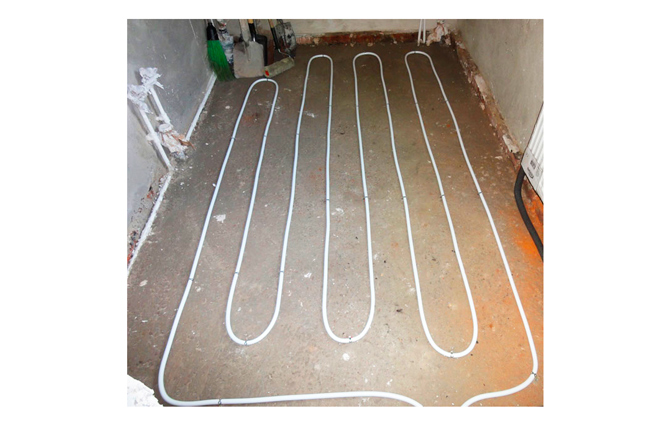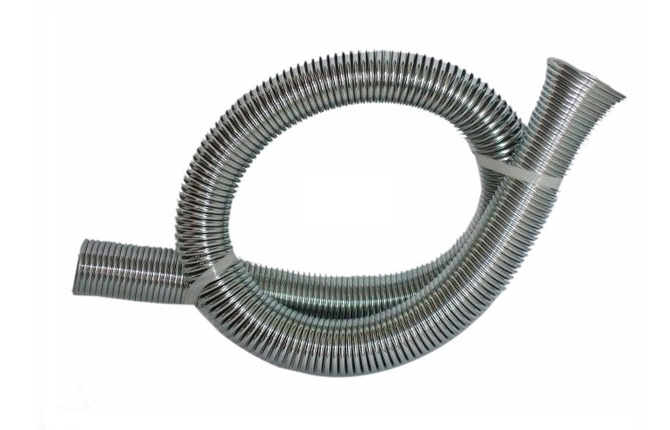When a spring is needed for metal-plastic pipes - calculation of the bending radius
Appearance three-layer pipes based on polyethylene, aluminum and polypropylene at one time it became a discovery for most lovers of building with their own hands. It was much more convenient to work with a rigid and at the same time flexible metal-plastic pipe than with steel or pure polypropylene.
But the real discovery was the fact that it was possible to bend water pipes simply by hand, using a special spring for a metal-plastic pipe. Moreover, the quality of bending turned out to be quite high.
The content of the article:
When is a spring needed?
The advantage of a metal-plastic pipe is the combination of relatively thin plastic walls with rigid aluminum reinforcement. This means that with a small radial or longitudinal load or bending, the product will behave like vinyl in the cold.
Up to a certain angle of twist, it lends itself to uniform bending. As soon as the radius becomes less than a certain value, the metal-plastic pipe breaks with the formation of a “hinge” or fringes.
You can try to level the workpiece, and there are special techniques for this, but only for short sections. If the problem arose with a long section of the heating system or underfloor heating circuit, then the situation can be corrected by installing two fittings at the breaking point.
The durability of the aluminum and polyethylene layers depends on how correctly the metal-plastic pipe is bent. If at least one of them is damaged, the metal-plastic will inevitably fail.
How pipes are bent
There are several basic ways to correctly bend a metal-plastic workpiece.
There are three main ones used at home:
- The pipe is bent using a manual or tabletop pipe bender with a set of supports of different radii of curvature.
- Rapid bending is performed using a conductor spring;
- Single bends can be made using a makeshift jig.
The highest bending quality is obtained when using a manual pipe bender, the lowest - with semi-handicraft tools.
Any attempts to bend the pipe using a template made of self-tapping screws or a plywood jig lead to peeling of the polyethylene on the inner walls of the pipe. Even if the weld on aluminum remains intact, there will still be no reliable protection of the metal from water.
There is no point in buying a pipe bender in order to bend a dozen radii. Therefore, the optimal solution would be spring for bending metal-plastic pipes, especially since its cost is an order of magnitude lower than that of a good quality hand tool.
What does using a spring do?
In addition to the affordable price, using a spring conductor has two advantages:
Another advantage of using a spring is the ability to bend a pipe with a variable radius of curvature. It is performed only with hands and a spring.But only an experienced craftsman can make such a turn on a pipe bender.
Types of springs
The only disadvantage of using a spring conductor is that it is “tailored” to a certain diameter of a metal-plastic pipe.
The size of the pipe blank is indicated on the package with the spring. Therefore, to assemble a water supply system or a “warm floor” system in an apartment, you have to buy spring conductors for several pipe diameters.
Often on sale you can find sets of two springs of different diameters, and the conductors look different. This is a kit for bending one metal-plastic pipe, which includes one internal conductor spring and one outer spring for metal-plastic pipes. These sets are used to bend workpieces with a diameter of more than 25 mm. In other cases, you can use one spring conductor.
Springs may differ in wire profile. The cross-section of the wire base can be round or rectangular.
Inner springs
A flexible conductor for bending a metal-plastic pipe is easily distinguished by the characteristic wire cone at the end and the presence of a ring. Its outer diameter is 1-1.5 mm smaller than the internal size of the pipe blank. Therefore, the tapered end of the device helps to insert it inside and go through all the turns to the bending point.
A cord is tied to the ring, with which you can drag the conductor to the place where the bend is made. The ring and cone are considered indispensable when bending long pipelines, for example, if you need to lay a water-heated floor in one continuous section.
Outer springs
This type of conductor spring is placed over a pipe blank, so one of the ends of the device is made in the form of a socket.
Models designed for bending small-diameter workpieces have rings at the ends, bent at an angle of 90O to the workpiece axis.
They serve to securely hold the spring with your hands when bending. Outdoor models are considered safer and easier to use. The defect rate is several times lower than when using internal conductors.
Calculation of the bending radius of a metal-plastic pipe
There is a conditional formula for calculating the minimum permissible radius of rotation of the workpiece body when bending in a cold state. For manual bending, the radius R must be no less than the product of the outer diameter of the metal-plastic workpiece by a factor of 5. For example, for a 20 mm pipe, the bending radius must be no less than 100 mm.
This means that a pipe blank, bent by hand into a horseshoe or semicircle, will have a distance between the ends of 200 mm.
When using a spring, the bending radius is assumed to be 3.5 times the diameter of the workpiece.
Self-bending of metal-plastic pipes with a spring
There is an established opinion that metal-plastic pipe blanks should be heated with a hairdryer to 80-90 before bending. OC. It is believed that the heated outer polypropylene and inner layer of polyethylene become more plastic and are more easily deformed when bent.
In practice, heating workpieces is recommended only if work is done by hand, at temperatures below +5 OC. In other cases, heating may damage the inner layer of cross-linked polypropylene.
The bending process is as follows:
- Insert the conductor spring inside the pipe blank.If you plan to make several bends on a relatively short section of the workpiece, you can add 10-15 drops of glycerin inside. For long sections it is better to use an external spring without lubrication.
- Using a cord or rail, the conductor is pushed into the bending zone. For workpieces longer than one meter, the holes must be covered with foam rubber swabs so that the spring does not move before starting work.
- Bending is performed with short, neat movements. Wrap your hands around the conditional ends of the bent section, rest your thumbs on the center and bend the workpiece.
If a bend with a small radius is required, then you will need to make your hand grip slightly longer than the length of the bent section. Typically bending is performed in 15-20 bending movements. All that remains is to slightly loosen the bend in order to pull the spring out by the cord. Next, wash with soapy water to remove any remaining glycerin lubricant.
Have you ever had to bend metal-plastic pipes yourself?
A spring for metal-plastic pipes is a convenient and easy-to-use tool. Anyone can learn to work with a conductor spring. Often bending devices are made by hand.
Spring for bending plastic pipes: video
Have you ever had to make spring conductors with your own hands? Share how successful the springs turned out, and whether it was convenient to bend a metal-plastic pipe with a homemade device. Save the article to your bookmarks so as not to lose useful information.












Making a spring is much easier than making a pipe bender. I wound ordinary 2 mm wire for tying reinforcement onto a 20 mm pipe.The ends were clamped with clamps, heated with a burner, and doused with water. Low-carbon steel is soft, so the spring turned out to be weak. I put it on top of the metal plastic, wrapped it in a rag and bent it, it turned out great. True, the spring was enough for a dozen bends, but I didn’t need more.
I wound copper wire directly onto a metal-plastic blank wrapped in oiled paper. I bent the workpiece without any problems, but there were still imprints of the turns on the surface. Therefore, it is better not to wind it, but to pick up a spring from some equipment, wrap it in paper and insert it inside. For internal bending, any suitable diameter will do.